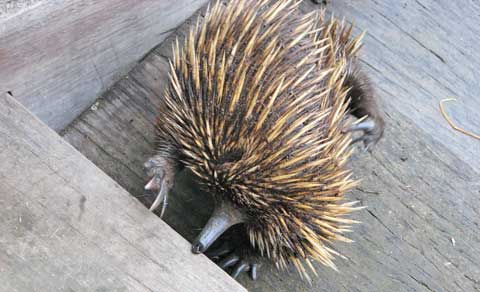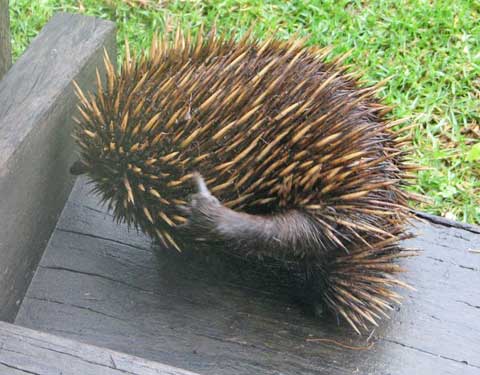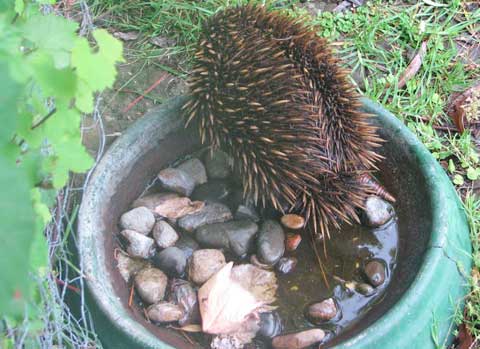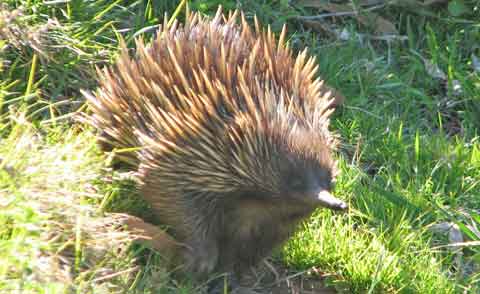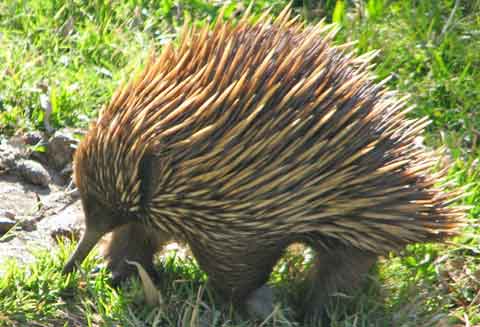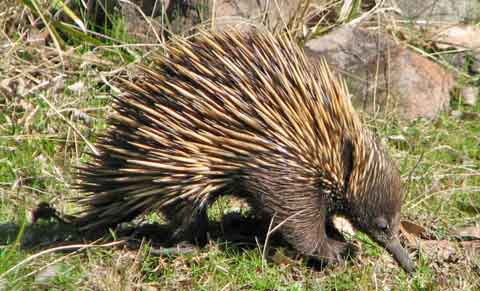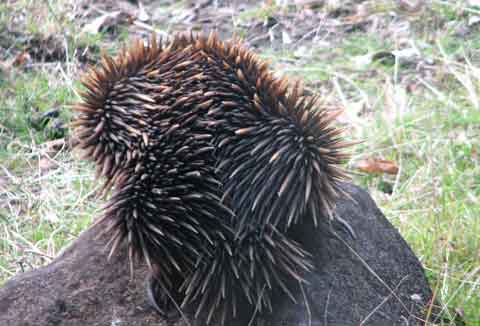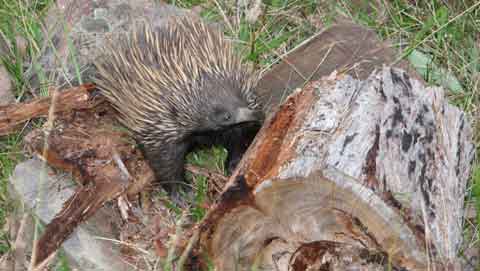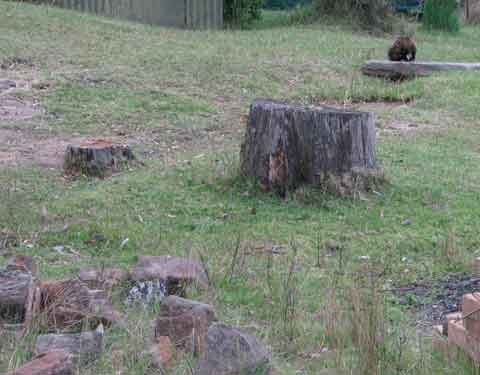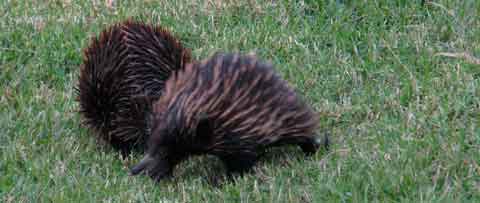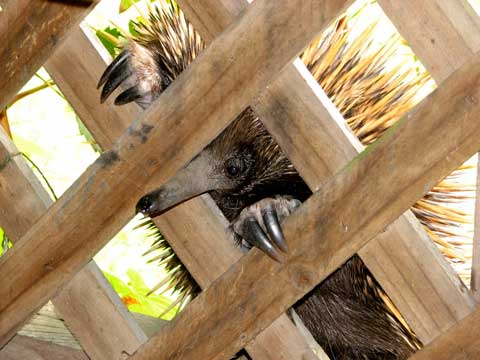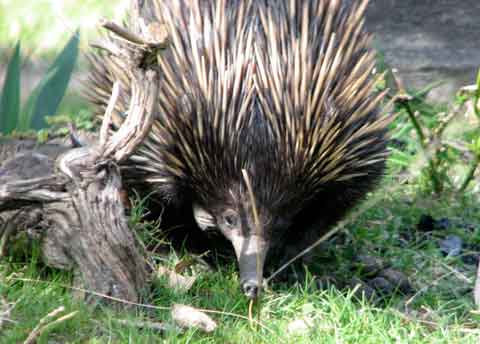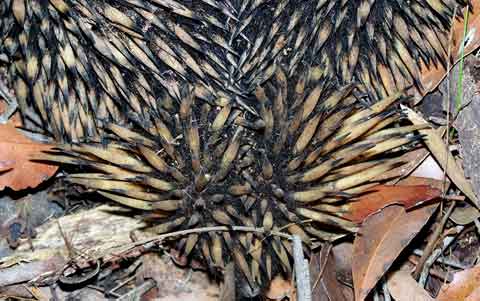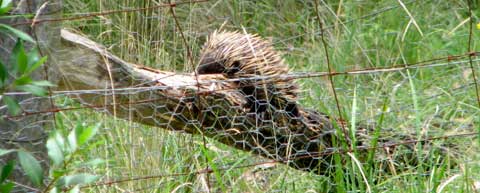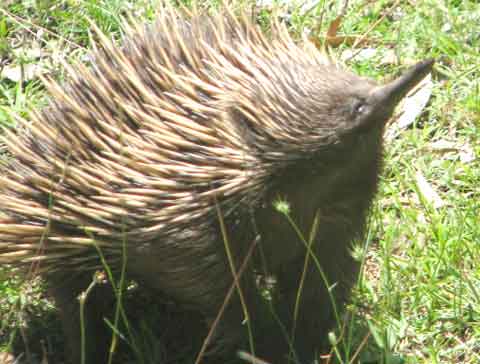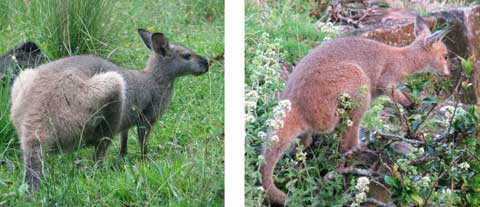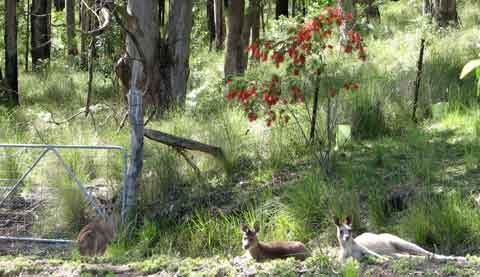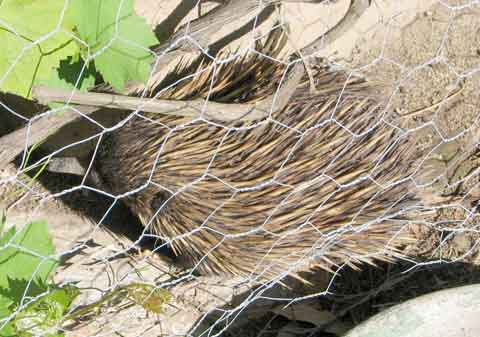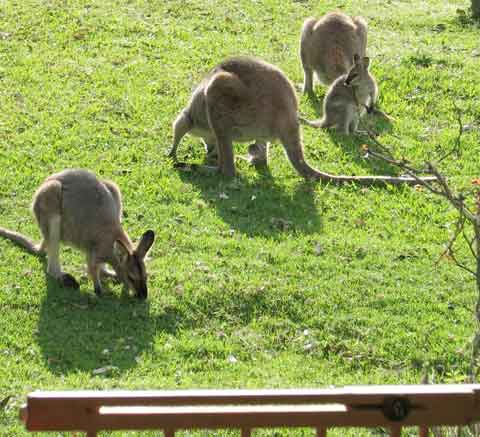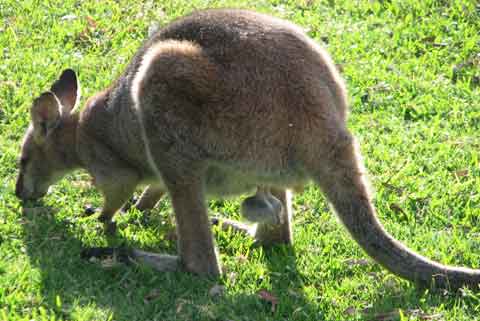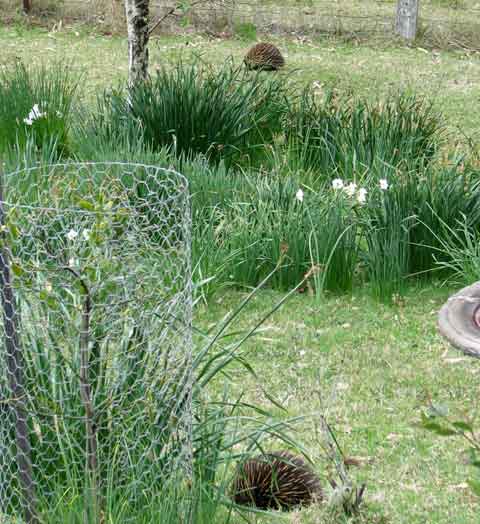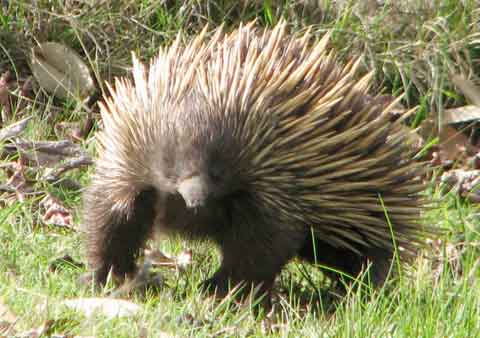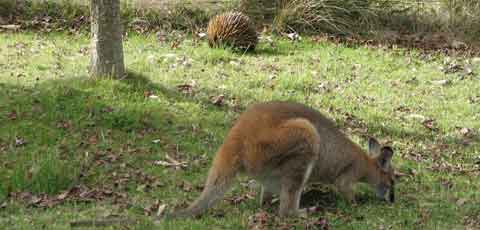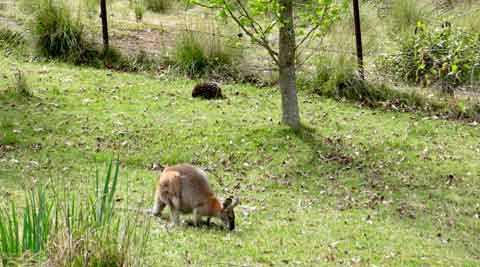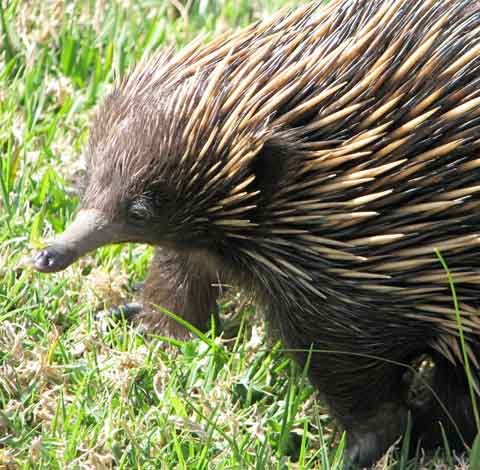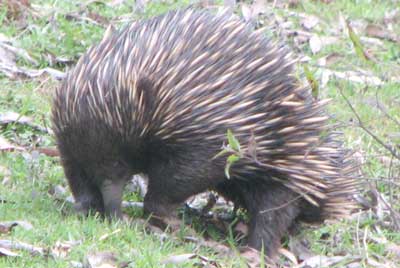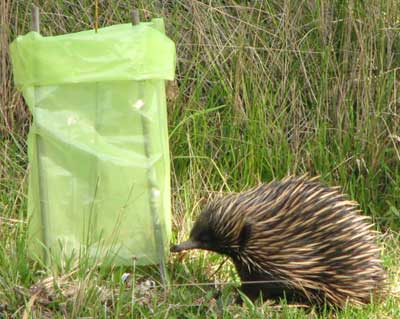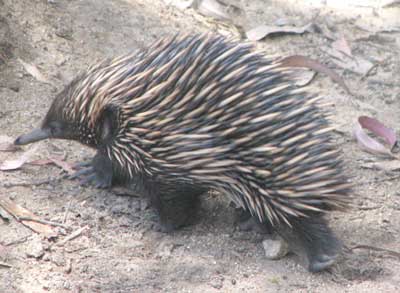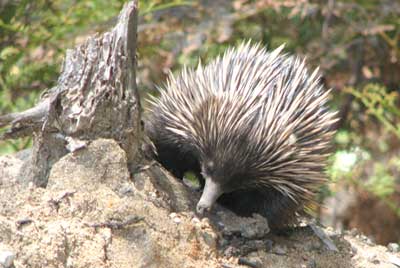Looking out of my eastern window, I was struck by how perfectly the colours of the fur of the Eastern Red-necked Wallaby match those of the local rocks, here laid as a tank base. They really belong.
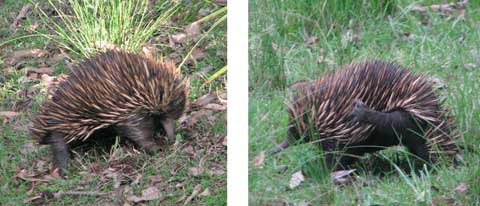
Not three metres away I spotted an echidna; not so camouflaged in my yard, but good to see as they’ve been absent lately, no doubt busy aerating other slopes. You can easily twist an ankle in my orchard in the many holes they’ve dug.
Like the wallabies, they have flea problems, but they are at least equipped with an extra long claw to get at them and scratch amongst the spines.
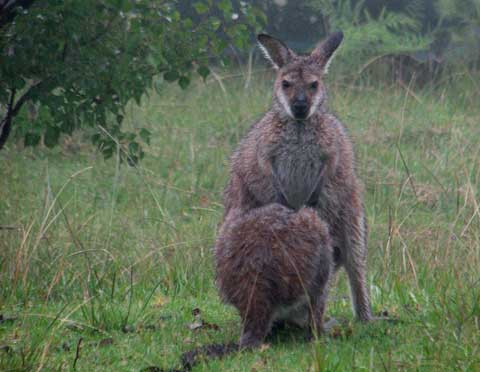
Now, in this non-stop rain, from my wet verandah I see that the wallabies and roos are still out there doing what they must, bedraggled and darkened but hopefully dry underneath their fur.
A few are sheltering under my verandah, but most want to be feeding.
This mother seemed to me to be exhibiting supreme patience as her big joey drank… and drank… and drank… while the wind whipped the cold rain around them. I hope he’s grateful.
